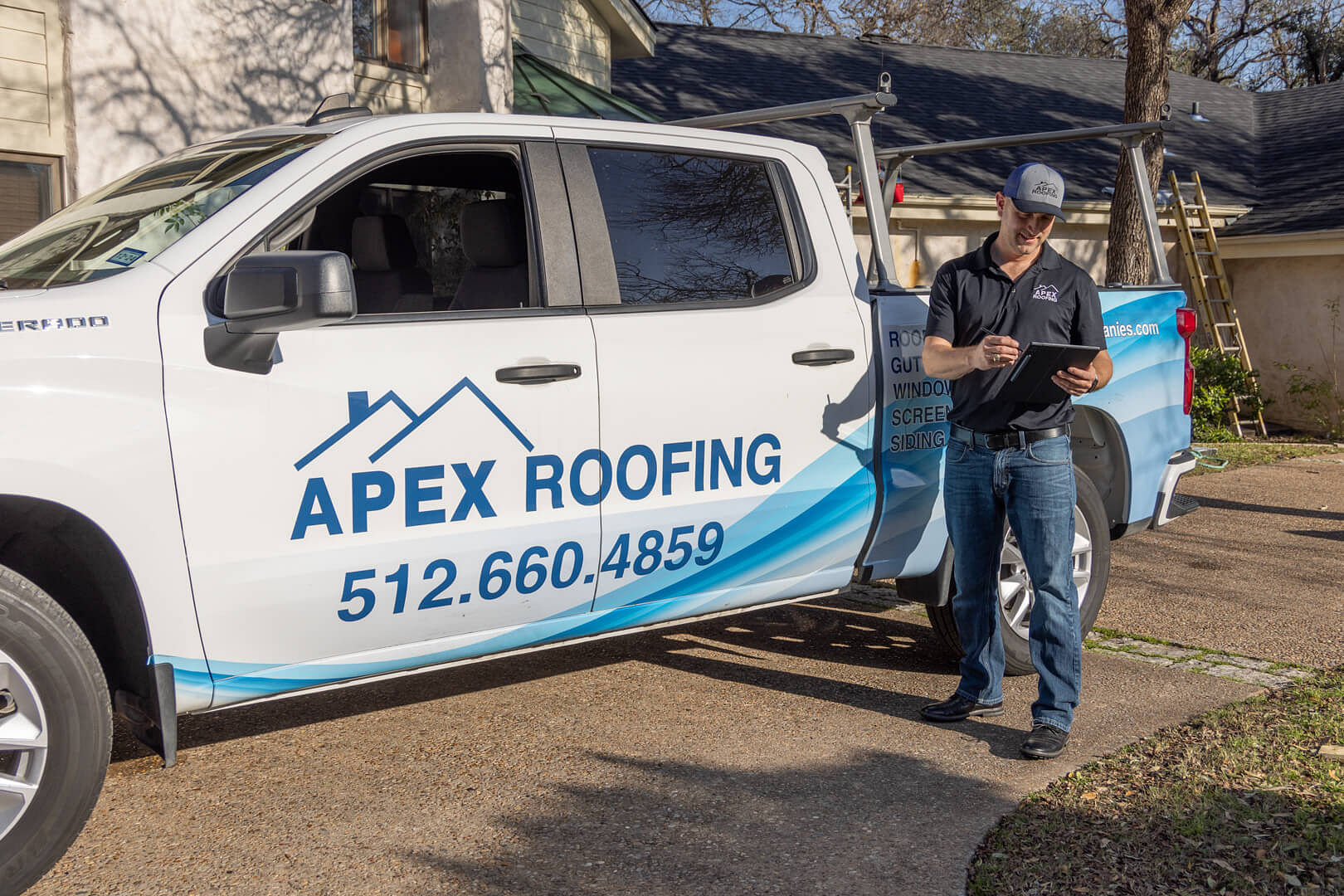Free Roof Quote – Call us today: 512-812-8454
How Do I Know if My Flat Roof Needs to be Replaced?
How Do I Know if My Flat Roof Needs to be Replaced?
What is the best material for a flat roof? What are flat roofs called?
Given the weather conditions throughout Texas, a flat roof takes a beating from the elements. Days of hot sun, then days of hard rain and hailstones. Over a year, a roof can experience every type of weather a person can imagine. So, as the owner of a commercial structure, you need to know what to look for in the way of flat roof repairs and flat roof replacements.
How Flat are Flat Roofs?
Let’s start with the most basic question: “Are flat roofs really flat?” The answer to that is no, they are not. For engineering purposes, a structure has to have some slant or slope for drainage, or a flat roof would simply cave in at some point.
Typically, flat roofs are made of large, single sheets of BUR, EPDM, Modified BUR, PVC, or TPO installed in various ways and fastened to the roof substrate by innovative methods. While you can’t keep a flat roof from aging or developing leaks simply because you know what type of material it is, being educated and informed about different types of flat roofing materials will help you make the best decision when it comes to repairing vs. replacing your current roof.
Here, we offer a brief summary of these flat roofing materials:
- Bur or Build Up Flat Roofs: Installed on commercial structures for over 100 years and still used with confidence today. Made with layers or stacks of roofing felt and melted hot tar, then after two or four layers/stacks, topped with loose crushed stone or gravel.
- Modified Bitumen Flat Roofs: Similar to the BUR described above, using 3’ wide rolls of asphalt, but only two layers/stacks on top of the base sheet and then a cap sheet to top it off. This is installed with either hot tar or an adhesive of cold applied solvent. It may be installed with an open flame that torches it to the substrate, and newer versions of this flat roof material are a peel and stick product.
- EPDM Rubber Flat Roofs: This flat roof material is installed by weighing it down with large river stones or by gluing it down and is typically installed as black roofing over a flat roofing board. This board is made of synthetic fibers or insulation board/fiberboard.
- Spray-Polyurethane Foam Flat Roofs: A layer of high-density polyurethane foam is sprayed on, then a waterproof coating that is an elastomeric material in either a gray or white color.
- Thermoplastic Membrane PVC or TPO Flat Roofs: Single layers of gray or white material have adhered in a method similar to how the EPDM rubber is installed. Sometimes it’s mechanically attached using plates and screws.
Do Flat Roofs Always Leak?
The most common reason that a flat roof leak is because you hired an inexperienced roofing contractor. The next reason is allowing for a poor budget range. When you combine those two things together, you’re going to have a leaking roof sooner rather than later.
Another cause of a leaking flat roof is having the wrong type of material on it. A flat roof with EPDM material cannot be repaired using roofing tar. An inexperienced roofing contractor will likely try this because they don’t know how to work with EPDM roofing.
A third reason a flat roof is likely to leak again relates to an inexperienced roofing contractor and a tight budget via a lack of roof flashing. Flashing is a must around roof protrusions and roof transitions on commercial and residential roofing. Without flashing, a flat roof is prone to leak. The roof protrusions that are the most prone to this are:
- Chimneys
- HVAC systems
- Vent pipes
- Skylights
Perhaps the most significant leak cause for a flat roof is poor drainage. A flat roof has some slant or slope; it is engineeringly required. It also needs drainage, and if that drainage isn’t sufficient or becomes clogged, then the water will pool and seep into the membrane. From there, a leaking flat roof is just a matter of time.
This also relates to a flat roof with an overhang because, without that overhang, water pooling is more likely. A professionally installed flat roofing material on your building will encourage water to flow toward the drain; the overhang assists and assures this happens.
How Long Do Flat Roofs Last?
Flat roofing experts say that a professionally installed and maintained flat roof can have a life expectancy of up to 40 years. The different materials and what type of climate the roof’s in can affect this time frame, but most important is the maintenance and upkeep of the flat roof. The more regimented the maintenance and care, the longer a flat roof will last. Call tel:+15126604859 or email us today for your flat roofing needs.

